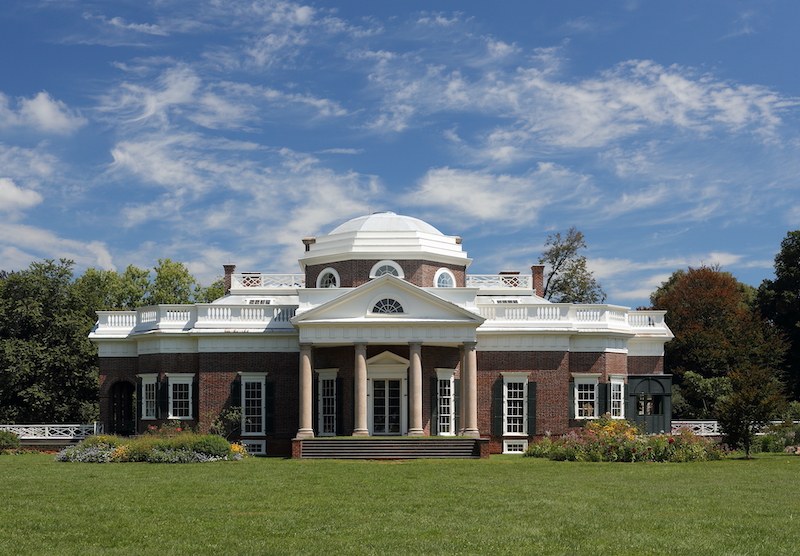Thomas Jefferson's Monticello
Thomas Jefferson designed his home, Monticello, after inheriting 5,000 acres just outside Charlottesville, Va., in Albemarle County. The neoclassical house amidst a tobacco plantation became a model of Jeffersonian architecture and the family's primary residence. Today, Monticello is a National Historic Landmark as well as a UNESCO World Heritage Site along with the University of Virginia, which Jefferson founded.
What Does Monticello's Name Mean?
Monticello is an Italian term for "little mountain." The stately home is located atop a small peak in the Southwest Mountains of Virginia. It overlooks a number of gardens, slave housing and tobacco fields.
When Was Monticello Built?
Jefferson broke ground on Monticello in 1768. When he married in 1770, he and his wife, Martha Skelton, lived in the South Pavilion, an existing outbuilding, until the home was ready.
Martha Skelton Jefferson died in 1782, and soon thereafter, the newly widowed Jefferson went abroad to France as a U.S. Minister. His exposure to the architecture then popular in France influenced his taste, and when he returned home, he determined to remodel Monticello accordingly.
In 1793, after his first stint as U.S. Secretary of State under George Washington, Jefferson began the project, which remained a work in progress until his death in 1826. One of the major renovations was the addition of a centrally placed hallway with additional rooms, which expanded the living space to around 11,000 square feet. He also had the second story of the home remodeled into a bedroom on the mezzanine level.

The addition of a central dome above the entrance portico completely changed the exterior appearance of Monticello. A round skylight at its apex washed the room below with sunlight. However, the Jefferson family did not use the dome room very often, due both to the narrow staircase access and the difficulty of heating the space.
Who Owns Monticello Today?
When Thomas Jefferson died, he left Monticello to his daughter, Martha Jefferson Randolph. Needing to raise money, she subsequently sold the estate to James Turner Barclay, who kept it for only a few years before selling to Commodore Uriah P. Levy.
An admirer of Jefferson, Levy painstakingly restored Monticello to its former grandeur. The estate remained in the Levy family for nearly 100 years, and they continued to maintain and preserve the historic property.
Jefferson Levy was the final family member to own Monticello, and in 1923, he sold it to the Thomas Jefferson Foundation. For nearly a century, the Foundation has opened Monticello and its surroundings to the public.
Why is Monticello Important?
The founding father considered Monticello to be his "essay in architecture." He worked on the home and estate over the course of 40 years, during which he also penned the Declaration of Independence and acted as President of the United States.
Jefferson also meticulously crafted the grounds in view of Monticello with formal gardens, orchards, vineyards and an 18-acre ornamental forest. He experimented with plant propagation, and the grounds today include The Thomas Jefferson Center for Historic Plants.
Monticello serves as not only a tribute to the founding father and third U.S. President but also as an example of Jeffersonian architecture. Although the founding father designed other buildings, Monticello remains his most iconic work.
Why is Monticello on the Back of a Nickel?
Over the centuries, Monticello has come to represent Thomas Jefferson's accomplishments, ingenuity and his way of life. It is a living artifact that, engraved on a commonly used coin, serves as a vibrant reminder of the post-Revolutionary era.
